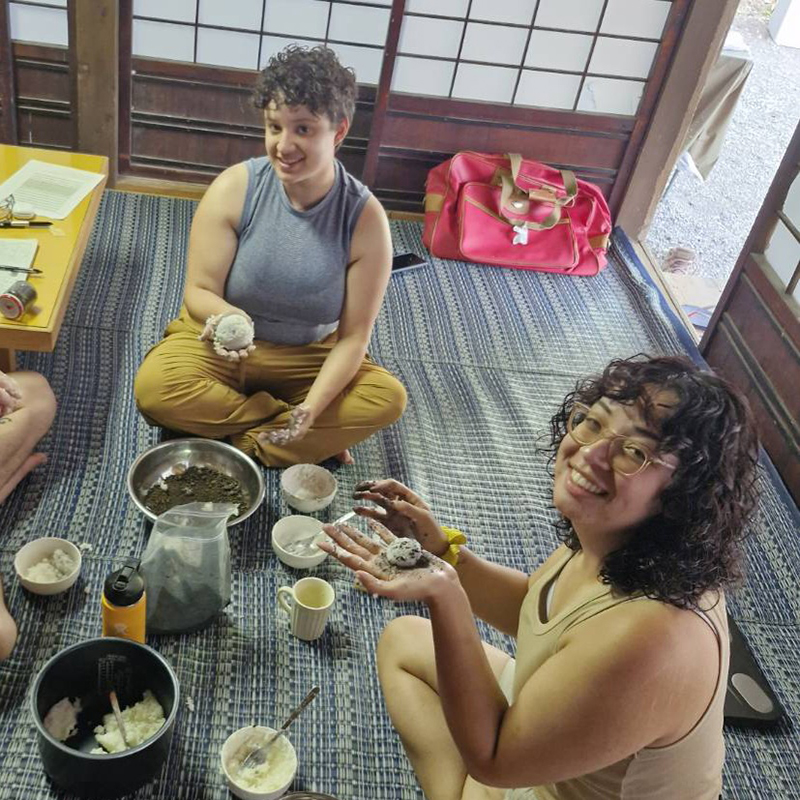Posted: 2/5/2025
SNR student building Japanese-Spanish-Portuguese connection
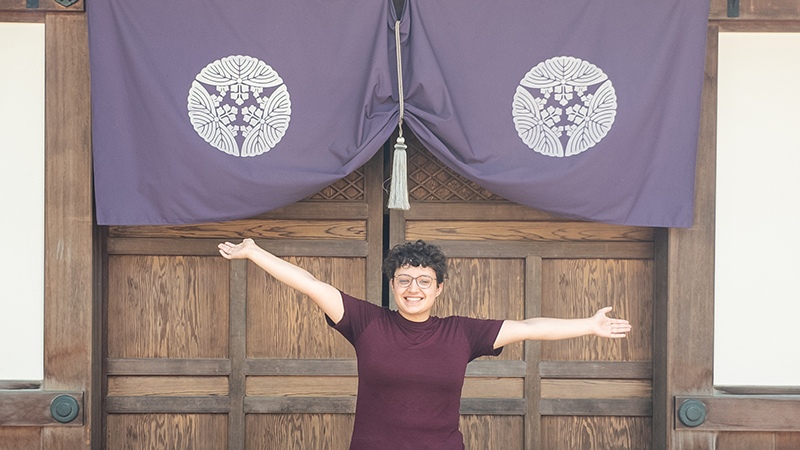
By Ronica Stromberg
Senior student Natalia Hagen is working to combine wildlife conservation and foreign languages in a career.
"Bringing those two things together is kind of where I see myself in the future," she said about her plans after graduating from the School of Natural Resources in May.
A Brazilian-American with family ties to Brazil and Peru, she grew up speaking English, Portuguese and Spanish with family and friends. She chose to learn Japanese in eighth grade and high school in Cedar Rapids, Iowa, and continued those studies as a Japanese minor at Nebraska. This past summer, she took part in a World Unite! project that gave her the best of her major, fisheries and wildlife, and her minor.
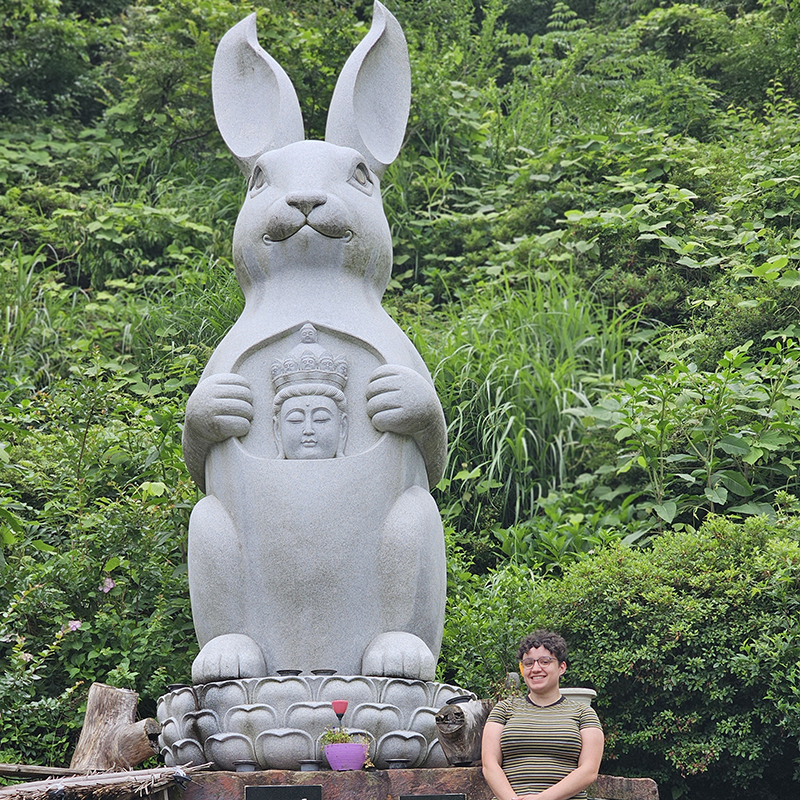
She went to Japan from June 19 to July 30, 2025, visiting Tokyo three days, carrying out her World Unite! project on Sado Island over five weeks and then visiting Osaka a couple of days to see friends she had made at the University of Nebraska-Lincoln when they were visiting on an exchange program. In her project, which she had found online and set off for by herself, she and other volunteers from around the world stayed at the Chokokuji temple at night and, during the day, worked on conservation projects around Sado Island.
Hagen mainly worked to improve water quality and access near rice fields for the crested ibis. The bird almost went extinct in the 1900s because of overhunting and habitat loss, she said. She and other volunteers used shovels to dig irrigation canals around the fields to support invertebrate life for the ibis.
They also picked up trash on Wednesdays on a beach behind an ocean-backed restaurant and built a playground nearby from bamboo. Later, they visited an elementary school and spent time with fourth graders, helping them improve their English while playing a Japanese version of dodgeball.
With her ability to speak Japanese after four years of high school Japanese and four years of college Japanese, Hagen ended up being a spokesperson for her group.
"I would be the one speaking Japanese for everybody," she said. "And so, being able to improve my language skills was also really cool. I enjoyed it a lot."
She said conservation didn't seem to be as talked about in Japan as it is in the United States and she hopes to build a career working with the Japanese on wildlife conservation beyond ecotourism work like beach cleanups.
"It's definitely a work in progress I’m fighting for," she said.
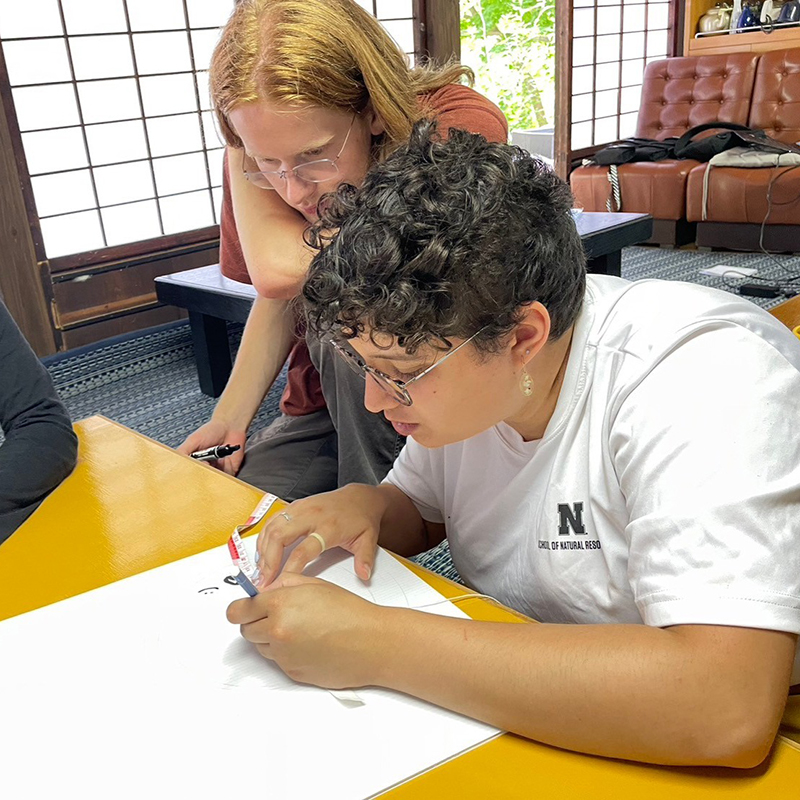
Hagen has traveled to many other countries like Brazil and Peru also and said she wants to use her language skills to involve other ethnic groups in discussions on conservation and in natural resource management. She suggested one way to do so might be to translate surveys, signs or educational materials into other languages.
"What I've learned traveling throughout the years and experiencing different cultures is that we have a lot to learn from each other," she said.
As an example, one conservation behavior she saw in Japan that she said she would like to see in America is the way they recycle. She saw the Japanese separate their recyclables into about seven categories, such as burnables, glass and compost. These bins were then picked up from their homes and businesses and transported to sites for recycling rather than landfills.
She also said Japan and Nebraska both have birds they care about—the crested ibis and sandhill crane—facing threats to them and their habitat. She suggested through conservation discussions, the two nations might learn different ways to help protect these birds, carry out research and develop policies.
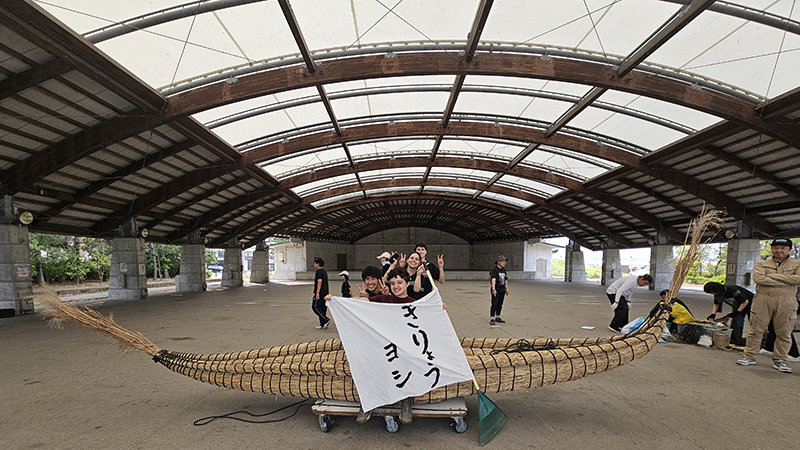
Hagen has long cared about animals and said she had planned to be a vet before learning she did not have to be an animal doctor to be able to protect and care about animals. She also wanted to include her interest in foreign languages, specifically Japanese, in a career choice but found the university she originally planned to go to, Iowa State, did not offer Japanese. So, she came to Nebraska and looked at alternatives to the veterinarian route.
"I really chose between fishes and wildlife and animal science on a whim, just like, 'Fisheries and wildlife sounds cool. I don't really know what I'm getting into, but I'm going to try it,' and I fell in love with it," she said.
She took Chris Chizinski’s Human Dimensions of Fish and Wildlife Management class and became more interested in how humans interact with and influence the environment and wildlife. She found she particularly enjoyed learning how to build surveys and being able to ask people questions.
She has since worked in Chizinski's lab, interviewing duck hunters about a Tier Two duck hunting program and agriculture producers in the Rainwater Basin region of Nebraska. She has cleaned the data she gathered, analyzed it and presented on it at a conference. She also has been serving as a teaching assistant in an ecology class of Lindsey Chizinski.
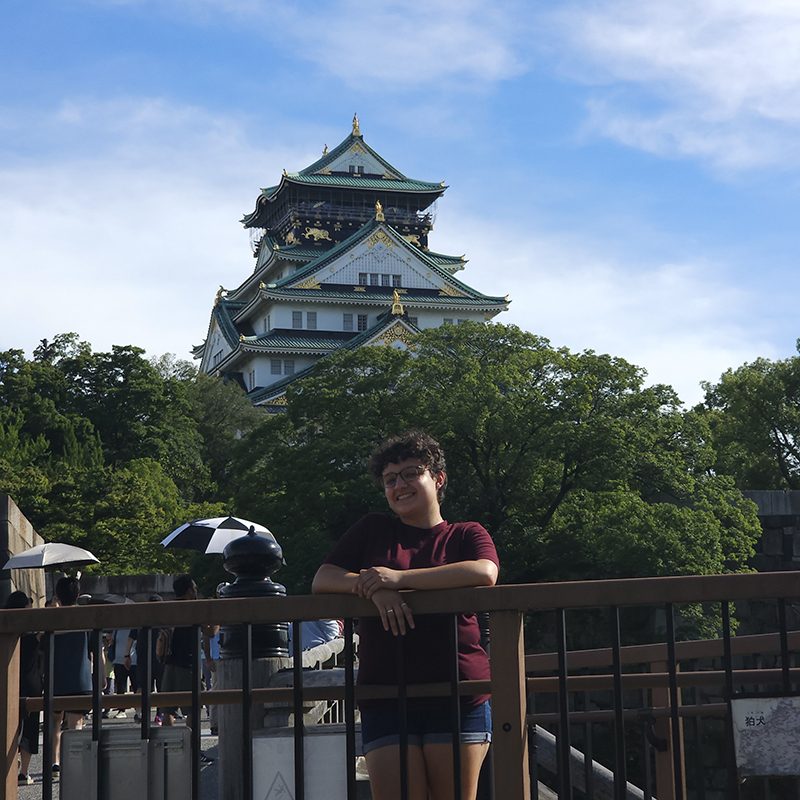
Going forward, Hagen plans to earn her master’s degree in human dimensions of natural resources and is looking at graduate schools now. She expressed gratitude for her Nebraska experience, especially cultural opportunities like the Taekwondo Club and Kawasaki Reading Room, scholarships she won and professors and student advisors.
"You can see there's all this passion and really love for what people do and for the students," she said. "I've seen that in the School of Natural Resources, and so, that definitely has really been a positive influence on my life, for sure."
If you want to support students like Natalia Hagen through the Glow Big Red campaign, you can donate to the club she benefited from, Taekwondo Club, at https://glowbigred.unl.edu/campaigns/taekwondo-club or the School of Natural Resources at https://glowbigred.unl.edu/campaigns/school-of-natural-resources.
